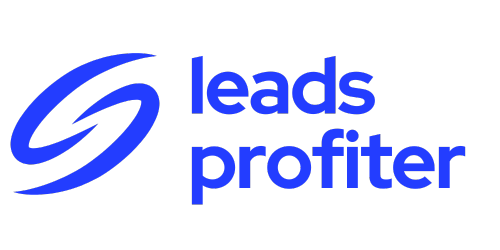Table of Contents
Definition
Lead Conversion Rate is a key performance metric that measures the percentage of leads that take a desired action, such as making a purchase, scheduling a demo, or signing up for a service, out of the total number of leads generated. It serves as an indicator of how effectively your lead generation efforts are turning prospects into customers.
(Number of Converted Leads / Total Number of Leads) × 100
For example, if you generated 500 leads in a campaign and 50 of them became paying customers, your lead conversion rate would be: (50 / 500) x 100 = 10%.
You can use our lead conversion rate calculator right here.
Why Lead Conversion Rate Matters
Measures Campaign Effectiveness
Measuring your campaign’s effectiveness is essential because it reveals how well your lead generation strategies are driving real results.
A strong lead conversion rate indicates that your marketing campaigns are successfully engaging your target audience and compelling them to take action.
This insight allows you to continue investing in strategies that work while identifying areas that may need improvement.
Improves ROI Analysis
Understanding your conversion rate also plays a crucial role in improving your return on investment (ROI). By analyzing how many leads turn into paying customers, you can assess the true value of your marketing and sales efforts.
This understanding enables smarter budget allocation, ensuring that resources are directed toward high-performing channels and strategies that maximize profitability.
Identifies Weak Points
A low conversion rate can also highlight weak points in your sales funnel. It signals the need to optimize processes such as nurturing leads, refining your messaging, or improving follow-up strategies.
Identifying these gaps allows you to implement targeted solutions that can significantly improve your lead conversion and overall business performance.
Aligns Sales and Marketing
Moreover, tracking conversion rates helps bridge the gap between marketing and sales teams. Marketing teams focus on generating leads, while sales teams work to close deals.
Monitoring conversion rates ensures both teams are aligned and working towards the same goals, fostering collaboration and creating a seamless process from lead generation to sales conversion.
By tracking this metric, businesses can make data-driven decisions to enhance their overall lead generation and sales strategy.
How to Improve Lead Conversion Rate
Boosting your lead conversion rate requires strategic actions to guide your prospects through the sales funnel more effectively. Here are proven techniques:
Enhance Lead Qualification
Enhancing lead qualification is a critical step in improving conversion rates. By using tools like lead scoring, you can prioritize high-quality leads that are more likely to convert into customers.
Establishing clear criteria for what makes a lead “sales-ready” ensures that your sales team focuses on prospects who have shown genuine interest and are prepared to engage. This targeted approach minimizes wasted effort and maximizes the efficiency of your sales process.
Optimize Landing Pages
Optimizing landing pages is essential for capturing leads effectively.
A visually appealing, fast-loading landing page with clear calls-to-action (CTAs) can significantly increase engagement and conversions. Simplifying forms by reducing the number of required fields helps minimize friction, making it easier for visitors to complete sign-ups or submissions.
A seamless user experience encourages more prospects to take the next step in the buyer’s journey.
Personalize Follow-Up Communications
Personalizing follow-up communications strengthens relationships with potential customers. Tailored emails, messages, or calls based on lead behavior and preferences make interactions more relevant and engaging.
Automation tools can support this process by delivering timely follow-ups and nurturing campaigns, ensuring that leads receive the right content at the right time to guide them toward a purchase decision.
Offer Value at Every Stage
Offering value at every stage of the buyer’s journey is key to nurturing leads. Sharing relevant content such as eBooks, case studies, or webinars educates prospects and keeps them engaged.
By addressing their pain points and demonstrating how your product or service provides effective solutions, you build credibility and move leads closer to conversion.
Use Social Proof
Using social proof is a powerful way to build trust with potential customers. Featuring testimonials, reviews, and case studies on landing pages and in emails reassures leads that others have had positive experiences with your brand.
This credibility can significantly influence decision-making and encourage prospects to move forward.
Test and Analyze
Testing and analyzing your marketing strategies ensures continuous improvement. Conducting A/B tests on different CTAs, headlines, and visuals helps you identify what resonates most with your audience.
Regular analysis of conversion data allows you to pinpoint weak areas in your sales funnel and implement data-driven optimizations to boost overall performance.=
Lead Conversion Rate Benchmarks
The ideal lead conversion rate varies depending on your industry, business model, and target audience. However, here are general benchmarks for different sectors:
B2B SaaS: 5-10%
E-commerce: 1-3%
Real Estate: 3-5%
Financial Services: 5-10%
It’s important to compare your conversion rate to industry standards while considering your unique business context.
Tools to Track Lead Conversion Rate
Google Analytics – Tracks website traffic, goals, and conversion rates.
CRM Software (e.g., HubSpot, Salesforce) – Monitors lead progress and identifies conversion trends.
Marketing Automation Tools (e.g., Marketo, ActiveCampaign) – Automates campaigns and analyzes results.
A/B Testing Tools (e.g., Optimizely, Unbounce) – Tests landing page or email effectiveness.
Heatmap Tools (e.g., Hotjar, Crazy Egg) – Shows user behavior and highlights areas to optimize.
Common Mistakes that Lower Lead Conversion Rate
Poor Lead Follow-Up: Delays in contacting leads decrease their interest and likelihood to convert.
Unclear Value Proposition: If leads don’t see how your product solves their problem, they’ll drop off.
Complex Forms: Asking for too much information upfront discourages leads from completing the process.
Weak CTAs: Generic or unclear CTAs fail to inspire action.
Lack of Trust Elements: Missing testimonials, guarantees, or security badges can erode trust.
By avoiding these mistakes, businesses can increase their chances of turning leads into loyal customers.
Final Thoughts
Lead Conversion Rate is a fundamental metric that every business must track to evaluate the success of their lead generation efforts. By focusing on lead quality, refining your sales funnel, and analyzing performance data, you can continually improve your conversion rate and boost revenue.








